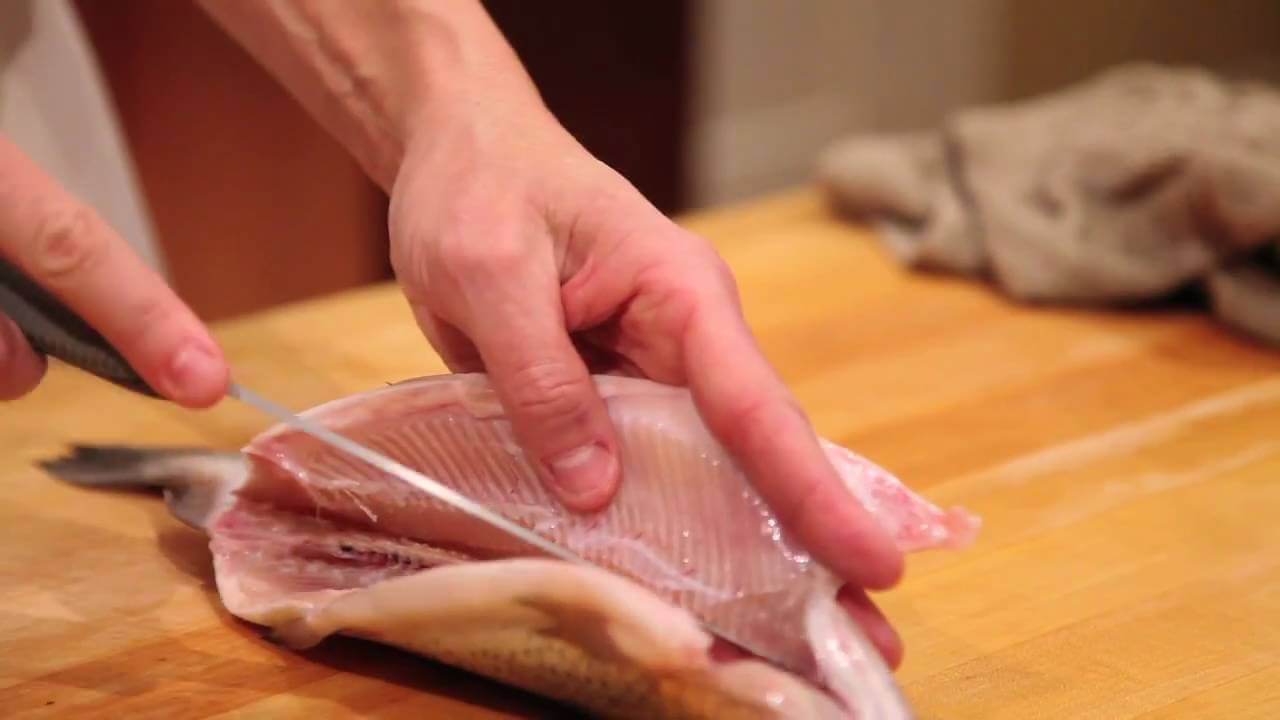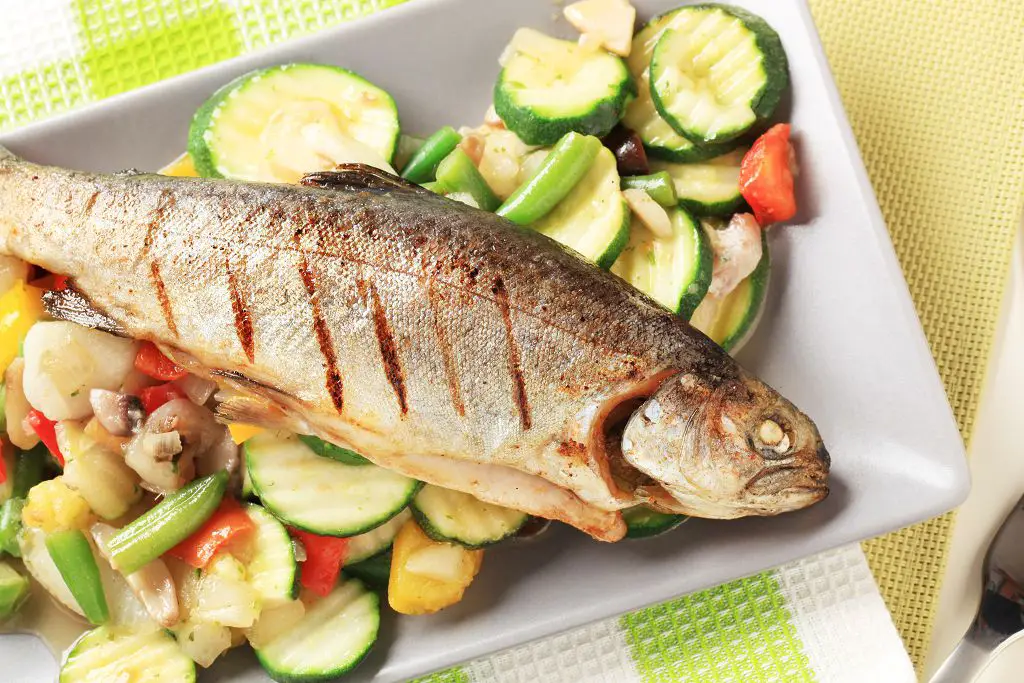This post was last updated on February 11th, 2024 at 06:16 pm
Deboning a trout is the process of removing all the bones from the meat, so it can be cooked and eaten more easily. This process requires some basic skills in order to do correctly, including patience, paper towels to remove moisture (and slippage), and cutting board management.
It’s critically important to have sharp knives for deboning because dull ones will take much longer than they need to or even break off when you are trying to cut through bone. Read the rest of the this article to learn more about how to debone trout effectively.
The Best Way to Debone a Trout

Here are the steps to easily debone trout after you’ve cleaned the trout:
- Make sure you have a good cutting board or butcher block with a well-honed, sharp knife. It is not recommended to use glass or ceramic boards since they will dull your knife quickly.
- Use clean paper towels to dry off the fish-a slippery fish makes deboning twice as difficult.
- You’ll want to take care of the fins first before starting on the bones. For this, make sure the fish is on its tail with its head away from you. Next, use your knife to cut around the fins.
- You will now want to insert your knife through the bottom of the fish up towards the spine. Cut along the spine from tail to head without piercing through the outer skin. Repeat for the other side of the spine.
- Using your knife or scissors, snip the spine by the neck and tail to further release the filets. The trout should open into a butterfly position.
- Next, flip the trout skin side down and insert your knife beneath the spine. Cut along the spine to remove it completely.
- There will likely be quite a few bones left in the rib and stomach area. Cut these out by running your knife gently beneath the boney areas. You should be able to pull the boney meat off once you’ve started a cut.
- Lastly, feel for any remaining bones and remove with tweezers.
Here is a great video about how to debone trout
What is deboning a trout?
The process of removing bones from trout meat will get easier with time, and will provide a much more enjoyable dining experience for you and your guests. This can be done by hand using a knife or by using tweezers. Once you have deboned your trout, you can then season and cook as desired.
Deboning trout is much easier than you might think, especially if you use a sharp knife. The quicker and more precise your cuts are the less time it will take to debone. The fish itself will also make a difference. Wild caught trout tend to have more bones and be harder to debone than farmed trout. That is why you will see restaurants serving up the tail and head of farm raised fish, but not wild ones.

Tips on how to make the process easier and faster
Learning how to debone trout can be a tedious task but it doesn’t have to be. Here are some of our top tips for deboniing trout quickly and efficiently:
- Invest in a good fillet knife.
- Keep your work surface as dry as possible to prevent slipping
- Make sure your cuts are clean and precise so you don’t waste time pulling off boney pieces.
- Try deboning multiple fish at once to streamline clean up time.
- Use clean, sharp scissors to cut the rib cage and tailbone out of trout fillets. Scissors are not only easier to use than knives, they’re safer too!
- This might seem obvious but make sure your work surface is free of clutter.
- Invest in lots of plastic wrap and aluminum foil to cover your fish once they’re filleted.
- Invest in an airtight container for your finished trout fillets. You’ll extend their shelf life this way if you don’t cook them right away
Why you should debone your fish before cooking it (especially if you are going for presentation)
Deboning your trout before cooking it will help to ensure that you do not overcook it. Additionally, deboning your trout will allow you to more easily enjoy it in a presentation fashion. This is the reason why restaurants serve up the tail and head of larger farm raised fish but not wild caught ones. Wild caught fish have more bones than farmed; therefore they are harder to work with and serve to patrons.
Can you eat pin bones in trout?
If you properly fillet and debone a trout, the only bones that should remain are the bones that stick out of the sides of the fish, known as pin bones. They should be removed with tweezers or pliers to avoid biting down on them or having them get stuck in your throat.
In Conclusion – How to Debone Trout
If you follow this guide and practice, you’ll have no trouble deboning your trout. We discussed where the fish should be positioned, to what type of knife should be used and why, and other tips discussed in this article. Hopefully this article answers all your questions regarding how to debone a trout.









